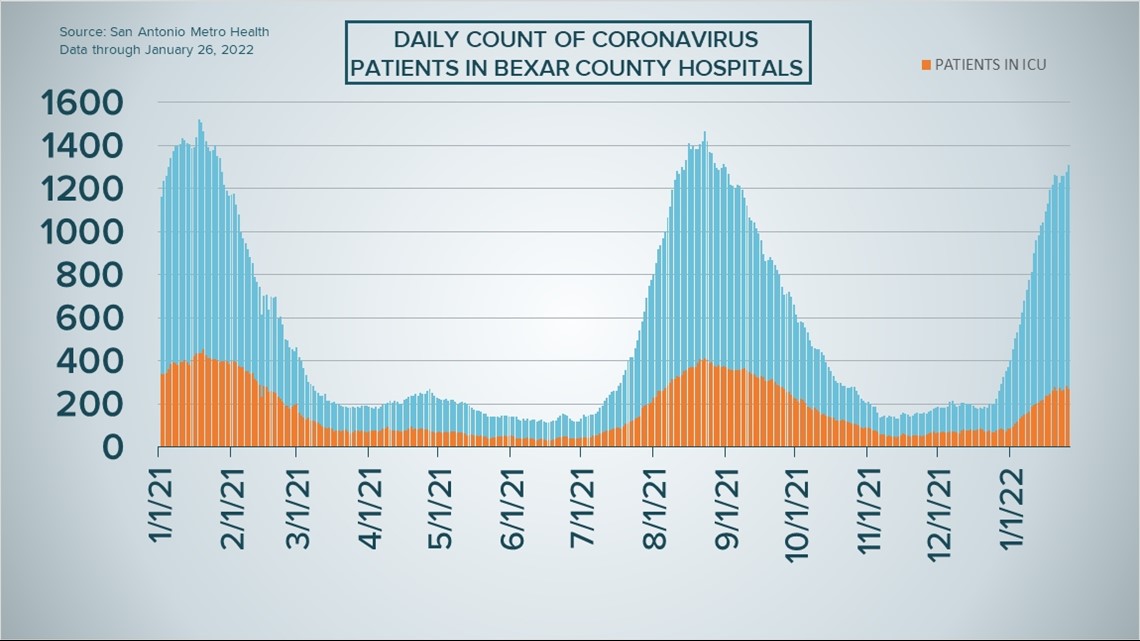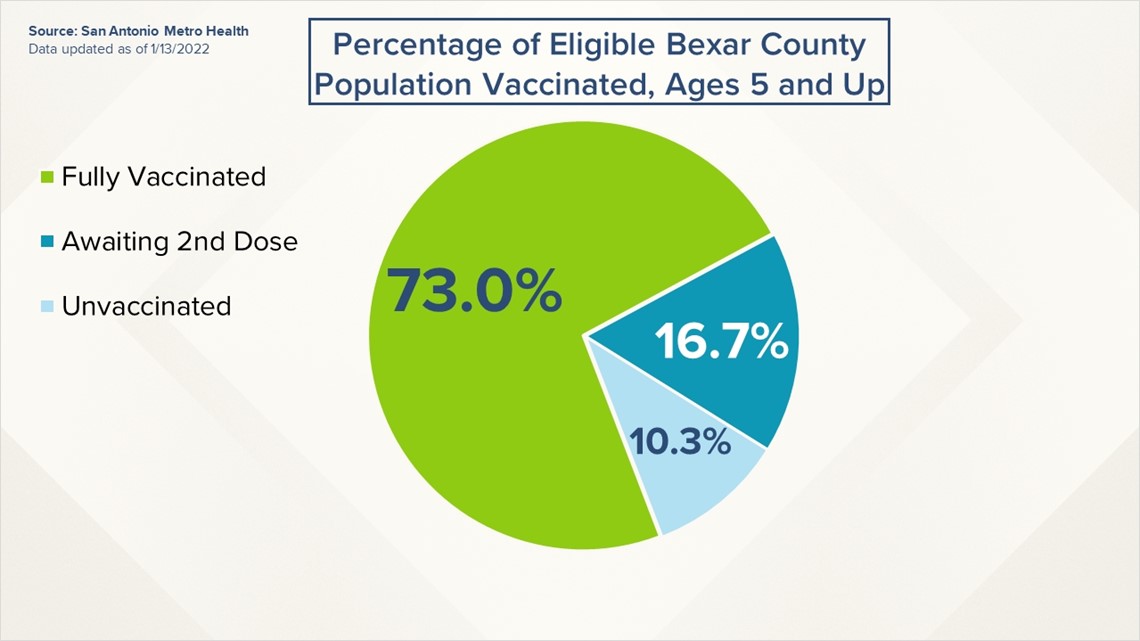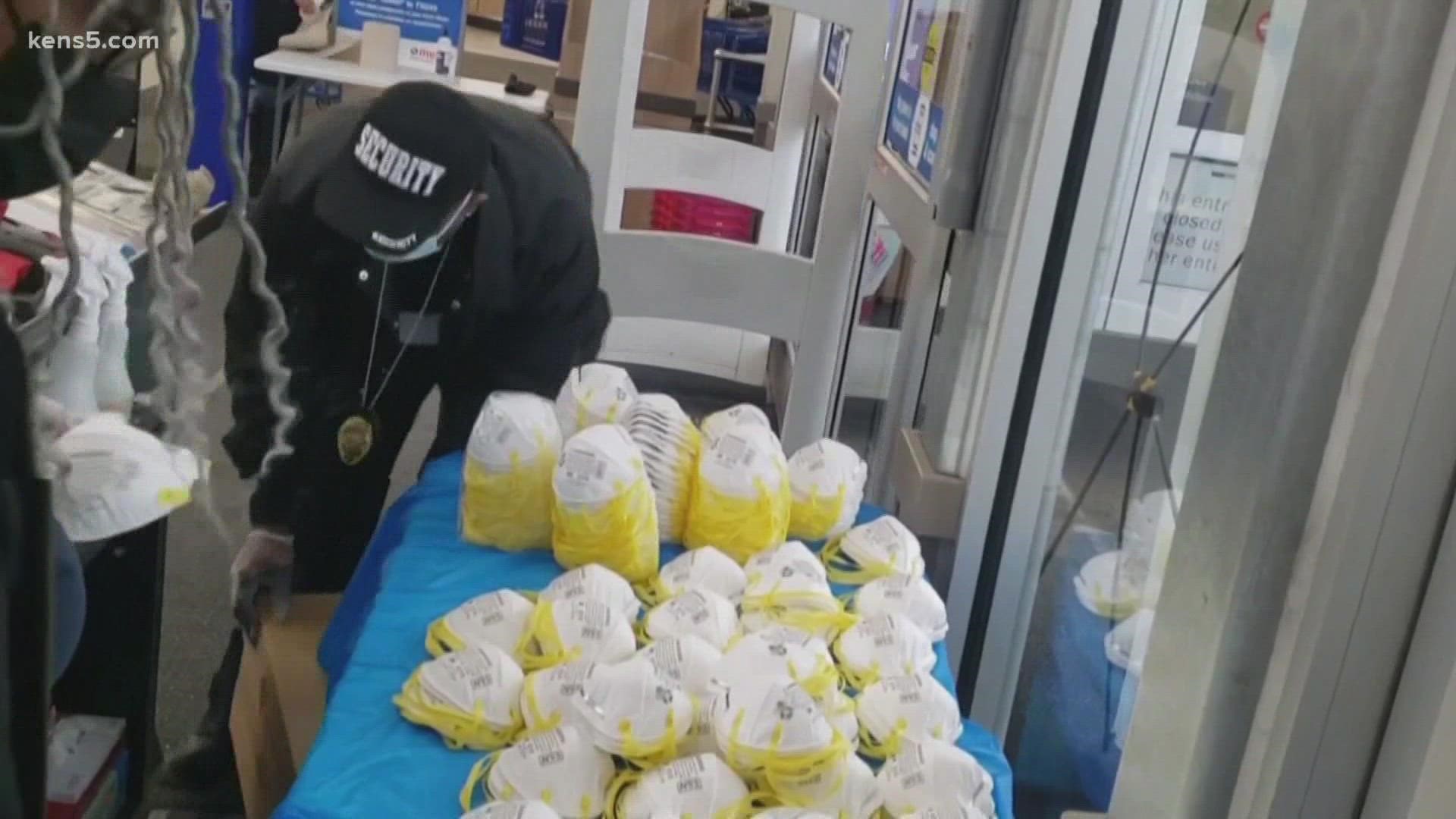SAN ANTONIO — Fifty-four Bexar County residents have died from COVID-19 complications in the last seven days after local health officials reported another 10 fatalities Wednesday, making it our area's deadliest seven-day stretch for virus-related deaths since the delta variant surge last summer.
Sixty-six residents died from virus complications between August 27 and Sept. 2.
Meanwhile, the county's total case count is approaching 470,000 after 4,625 new diagnoses were reported by Metro Health on Wednesday.
Hospitalizations continue to go up after briefly plateauing over the weekend. On Wednesday, 1,308 patients were receiving treatment for the virus in local facilities, the most since August 31. Of those 1,308, 270 are in intensive care and 129 are using ventilators.
A federal COVID-19 testing site continues to operate at the Alamodome until Feb. 4 as the highly contagious omicron variant continue to impact San Antonio.
Metro Health has reported 127,799 new COVID-19 cases so far in 2022, which accounts for 27% of Bexar County's total during the ongoing pandemic.
How Bexar County is trending




Vaccine Progress in Bexar County
The following numbers are provided by San Antonio Metro Health. A full breakdown can be found here.
- 1.699 million eligible Bexar County residents have received at least one dose of the coronavirus vaccine as of Thursday, Jan. 13, representing 89.7% of the county's population eligible (those over the age of 4) to receive a vaccination.
- 1.383 million eligible Bexar County residents are fully vaccinated as of Thursday, Jan. 13, representing 73% of the county's population eligible to receive a vaccination.


The CDC states that "when a high percentage of the community is immune to a disease (through vaccination and/or prior illness)," that community will have reached herd immunity, "making the spread of this disease from person to person unlikely."
The City of San Antonio breaks down the vaccination rates by zip code on Metro Health's Vaccination Statistics page.
Coronavirus in Texas
The total number of coronavirus cases in the state since the pandemic began grew by 30,734 on Wednesday, according to the Texas Department of State Health Services. That total includes 25,268 new confirmed cases and 5,466 new probable cases. More details can be found on this page.
Wednesday's figures bring the total number of Texans diagnosed with COVID-19 to more than 6.048 million.
An additional 263 Texans have died from virus complications, meanwhile, raising the statewide death toll to 77,321.
Coronavirus symptoms
The symptoms of coronavirus can be similar to the flu or a bad cold. Symptoms include fever or chills, cough, shortness of breath or difficulty breathing, fatigue, muscle or body aches, headache, new loss of taste or smell sore throat, congestion or runny nose, nausea or vomiting, and diarrhea, according to the Centers for Disease Control.
Most healthy people will have mild symptoms. A study of more than 72,000 patients by the Centers for Disease Control in China showed 80 percent of the cases there were mild.
But infections can cause pneumonia, severe acute respiratory syndrome, kidney failure, and even death, according to the World Health Organization. Older people with underlying health conditions are most at risk.
Experts determined there was consistent evidence these conditions increase a person's risk, regardless of age:
- Chronic kidney disease
- COPD (chronic obstructive pulmonary disease)
- Obesity (BMI of 30 or higher)
- Immunocompromised state (weakened immune system) from solid organ transplant
- Serious heart conditions, such as heart failure, coronary artery disease, or cardiomyopathies
- Sickle cell disease
- Type 2 diabetes
- The CDC believes symptoms may appear anywhere from two to 14 days after being exposed.
Human coronaviruses are usually spread...
- Between people who are in close contact with one another (within about 6 feet).
- Through respiratory droplets produced when an infected person coughs, sneezes or talks. These droplets can land in the mouths or noses of people who are nearby or possibly be inhaled into the lungs.
- Some recent studies have suggested that COVID-19 may be spread by people who are not showing symptoms.
Help stop the spread of coronavirus
- Stay home when you are sick.
- Eat and sleep separately from your family members
- Use different utensils and dishes
- Cover your cough or sneeze with your arm, not your hand.
- If you use a tissue, throw it in the trash.
Find a Testing Location
City officials recommend getting a COVID-19 test if you experience fever or chills, cough, shortness of breath or difficulty breathing, fatigue, muscle or body aches, headache, new loss of taste or smell, sore throat, congestion or runny nose, nausea or vomiting, or diarrhea.
Here's a Testing Sites Locator to help you find the testing location closest to you in San Antonio.
Latest Coronavirus Headlines
- 5 Caribbean destinations added to CDC 'avoid travel' list
- How to get the most accurate results from a rapid coronavirus test
- No, the CDC doesn’t count positive results from at-home COVID-19 tests
- Yes, there are ways to determine if a KN95 or N95 mask is counterfeit
- Beijing district orders mass virus testing ahead of Olympics
- 'Help us contain the virus' | City, county officials warn the COVID-19 risk level could hit critical
- Health experts worried as fewer Americans opt for booster
- Neil Young reportedly fights Spotify over Rogan and COVID

